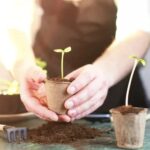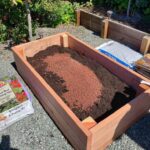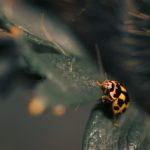With its unique climate and landscape, South Florida offers a fertile ground for creating stunning gardens that thrive in the subtropical environment. From vibrant flowers to lush greenery, there are endless possibilities for creating beautiful outdoor spaces filled with life. In this article, we will explore some gardening ideas for South Florida that cater to the region’s specific conditions and challenges.
South Florida’s warm temperatures, high humidity levels, and sandy soil can present both opportunities and obstacles for gardeners. Understanding the soil composition is crucial to successfully cultivating plants in this region. Additionally, selecting drought-resistant and heat-tolerant varieties can ensure that your garden remains vibrant even during the hottest months of the year.
Water conservation is also key when gardening in South Florida. With its hot climate, efficient watering techniques are essential to maintaining a healthy garden while minimizing water usage. By incorporating sustainable watering practices, such as using rain barrels and drip irrigation systems, gardeners can help preserve this valuable resource while keeping their gardens flourishing.
Understanding the Soil Composition in South Florida and How to Improve It
South Florida is known for its unique soil composition, which can pose challenges for gardeners looking to cultivate healthy and thriving plants. The soil in this region is primarily sandy with low nutrient content, making it difficult for plants to thrive without proper care and amendments.
This sandy soil drains quickly, often leaving plants susceptible to drought stress. However, with the right approach, it is possible to improve the soil composition and create a garden that flourishes in South Florida’s climate.
One of the most effective ways to improve the soil in South Florida is by incorporating organic matter such as compost, aged manure, or mulch. Adding these materials helps increase the nutrient content of the soil, improve its water retention capacity, and enhance microbial activity.
Additionally, organic matter helps break up compacted soil, allowing plant roots to penetrate more easily and access essential nutrients. Regularly adding organic matter to your garden beds can gradually transform the sandy soil into a fertile environment that supports healthy plant growth.
In addition to adding organic matter, gardeners in South Florida can also benefit from using slow-release fertilizers specifically formulated for sandy soils. These fertilizers provide a steady supply of nutrients over an extended period, reducing the risk of leaching in fast-draining soils.
Conducting a soil test can help determine the specific nutrient needs of your garden and guide you in selecting the appropriate fertilizer blend. By taking proactive steps to improve the soil composition and provide essential nutrients to your plants, you can create a vibrant and sustainable garden ecosystem in South Florida.
| Soil Improvement Strategies | Benefits |
|---|---|
| Incorporate organic matter such as compost and aged manure | Increases nutrient content, improves water retention, enhances microbial activity |
| Use slow-release fertilizers formulated for sandy soils | Provides steady nutrient supply, reduces leaching risks |
Best Plants and Flowers for South Florida Gardens
When it comes to selecting plants and flowers for a garden in South Florida, it is crucial to choose varieties that can withstand the unique climate of the region. With its hot and humid weather conditions, as well as occasional drought periods, South Florida presents challenges for gardening enthusiasts. However, by opting for drought-resistant and heat-tolerant plants, you can create a vibrant and thriving garden that will flourish all year round.
Native Plants
One of the best choices for a South Florida garden is to incorporate native plants into your landscape design. Native plants are already adapted to the local environment, making them excellent selections for their resilience to droughts and heat. Examples of native plants suitable for South Florida gardens include beautyberry, cocoplum, firebush, and muhly grass. By incorporating these plants into your garden, you not only support local ecosystems but also reduce the need for extensive maintenance and irrigation.
Succulents and Cacti
For those looking to add a touch of desert flair to their South Florida garden, succulents and cacti are ideal choices. These plants are known for their ability to store water in their leaves or stems, making them highly drought-resistant.
Succulents like aloe vera, agave, and sedum come in a variety of shapes and sizes, adding texture and interest to the garden landscape. Similarly, cacti such as prickly pear and barrel cactus thrive in the hot conditions of South Florida with minimal watering requirements.
Tropical Flowers
To infuse your South Florida garden with vibrant colors and exotic blooms, consider including tropical flowers that can handle the heat and humidity of the region. Plants like hibiscus, bougainvillea, bird of paradise, and plumeria are popular choices for adding a touch of the tropics to your outdoor space. These flowering plants not only attract pollinators like butterflies and hummingbirds but also bring a burst of color that enhances the overall aesthetic appeal of your garden in South Florida.
By carefully selecting drought-resistant and heat-tolerant varieties of plants and flowers for your South Florida garden, you can create a beautiful outdoor oasis that thrives in its unique climate. Whether you opt for native species, succulents, or tropical blooms, incorporating these resilient plant choices will ensure that your garden remains lush and vibrant throughout the seasons while requiring minimal water resources.
Experiment with different combinations of plants to find what works best for your specific gardening space while enjoying the beauty that these resilient varieties bring to your outdoor sanctuary.
Tips for Watering and Irrigating Gardens in South Florida
In South Florida, where the hot and humid climate poses unique challenges for gardening, proper watering and irrigation techniques are crucial for maintaining a healthy garden. With the high temperatures and frequent rain showers, finding the right balance to keep plants hydrated without overwatering can be tricky. One of the best gardening ideas for South Florida is to utilize efficient watering methods to conserve water while ensuring that your plants receive adequate moisture.
Drip irrigation systems are highly recommended for gardens in South Florida as they deliver water directly to the plant’s roots, reducing evaporation and water waste. This method also helps prevent diseases by keeping foliage dry.
Installing a timer on your irrigation system will ensure that your plants are watered at optimal times when evaporation rates are low, such as early morning or late evening. By incorporating these practices into your gardening routine, you can conserve water and promote healthier plant growth in the hot climate of South Florida.
Furthermore, mulching around plants helps retain moisture in the soil by reducing evaporation and suppressing weed growth. Organic mulches like shredded leaves or pine straw not only conserve water but also improve soil health as they break down over time. When watering your garden, it’s essential to check the soil moisture regularly to avoid underwatering or overwatering.
The use of moisture meters can help you determine when it’s time to water based on the specific needs of your plants. By following these tips for watering and irrigating gardens in South Florida, you can maintain a thriving garden while being mindful of water conservation efforts.
| Gardening Idea | Benefit |
|---|---|
| Drip Irrigation Systems | Delivers water efficiently to plant roots and reduces evaporation |
| Mulching | Retains moisture in the soil, suppresses weeds, and improves soil health |
| Moisture Meters | Helps determine when it’s time to water based on plant needs |
Designing a Tropical Garden in South Florida
South Florida’s unique climate and landscape provide the perfect setting for creating a tropical garden filled with exotic plants that can enhance the curb appeal of any home. From vibrant flowers to lush greenery, there are plenty of options to choose from when designing a garden in this region. Here are some gardening ideas for South Florida that can help you transform your outdoor space into a tropical oasis:
- Consider incorporating plants like heliconias, gingers, bird of paradise, and bromeliads to add a pop of color and texture to your garden.
- Opt for palm trees such as coconut palms or royal palms to create a tropical ambiance and provide shade in your outdoor space.
- Include flowering vines like bougainvillea or passionflower to climb trellises or arbors and add a touch of romance to your garden.
In addition to selecting the right plants, it’s essential to pay attention to the layout and design of your tropical garden. Create meandering pathways with colorful stones or shells, add water features like fountains or ponds, and include seating areas surrounded by lush foliage for relaxation and enjoyment.
By combining these elements with proper maintenance practices such as regular watering, fertilizing, and pruning, you can create a stunning tropical garden that not only enhances the curb appeal of your home but also provides a tranquil retreat in the midst of South Florida’s bustling environment. With these gardening ideas for South Florida, you can turn your outdoor space into a lush paradise that reflects the beauty of the region.
Pest Control and Disease Management for South Florida Gardens
Gardening in South Florida can be a rewarding experience, but it also comes with its fair share of challenges, especially when it comes to pest control and disease management. The warm and humid climate of South Florida provides the perfect conditions for pests and diseases to thrive, making it essential for gardeners to stay vigilant and proactive in protecting their plants.
Here are some common issues that gardeners in South Florida may encounter, along with effective strategies for dealing with them:
- Whiteflies: These tiny insects can quickly infest plants in South Florida, causing damage by sucking sap from the leaves. To combat whiteflies, try introducing natural predators like ladybugs or lacewings to your garden. You can also use insecticidal soaps or neem oil as organic solutions.
- Fungal diseases: The humid conditions in South Florida create an ideal environment for fungal diseases such as powdery mildew and black spot. To prevent fungal infections, ensure that your plants have good air circulation by spacing them properly. Avoid overhead watering, which can promote the spread of fungal spores.
- Caterpillars: Caterpillars are common pests that can defoliate plants in no time. Handpicking caterpillars off your plants is an effective way to control their population. Alternatively, you can use Bacillus thuringiensis (BT), a naturally occurring bacteria that targets certain caterpillar species.
By staying informed about common pests and diseases in South Florida and implementing proactive measures like companion planting, crop rotation, and proper sanitation practices, you can minimize the impact of these issues on your garden’s health and productivity. Remember that prevention is key when it comes to pest control and disease management in South Florida gardens.
Maintaining a Garden in South Florida
One key aspect of maintaining a garden in South Florida is staying on top of watering needs. The hot and humid climate can lead to rapid evaporation of moisture from the soil, so it’s important to water plants regularly. However, overwatering can also be a problem in this environment, leading to root rot and other issues.
It’s crucial to monitor soil moisture levels and adjust your watering schedule accordingly. Using mulch around plants can help retain moisture in the soil and reduce the need for frequent watering.
In addition to watering, regular maintenance tasks such as weeding and pruning are essential for a healthy garden in South Florida. Weeds can quickly take over flower beds and compete with plants for nutrients and water. Regularly pulling weeds by hand or using mulch as a weed barrier can help keep your garden looking tidy.
Pruning is also important for promoting healthy growth and preventing overcrowding of plants. By staying on top of these maintenance tasks throughout the year, you can enjoy a beautiful and thriving garden in South Florida.
Sustainable Gardening Practices for South Florida
Composting in South Florida
One of the most sustainable gardening practices for South Florida is composting. Composting allows gardeners to recycle organic waste and create nutrient-rich soil for their gardens. In a region like South Florida, where the sandy soil may lack essential nutrients, composting can help improve soil quality and fertility. By creating a compost pile or using a compost bin, gardeners can reduce waste sent to landfills while also benefiting their plants.
Utilizing Rain Barrels
Another eco-friendly solution for gardening in South Florida is the use of rain barrels. With the frequent rainfall in the region, collecting rainwater in barrels can help reduce water usage from traditional sources while providing a free source of water for irrigation. Installing rain barrels near garden beds or plants can make watering more sustainable and cost-effective. Additionally, using captured rainwater avoids chemical treatments often found in tap water, which can benefit plant health.
Embracing Eco-Friendly Solutions
In addition to composting and utilizing rain barrels, there are several other eco-friendly solutions that gardeners in South Florida can implement. This includes using natural pest control methods such as beneficial insects or companion planting to deter pests without harmful chemicals. Opting for native plant species that are adapted to the local climate can reduce water consumption and maintenance needs.
Implementing mulching techniques can also help retain moisture in the soil and suppress weeds naturally. By embracing these eco-friendly practices, gardeners in South Florida can create beautiful and sustainable landscapes that benefit both the environment and their gardens.
Transforming a Small Space in South Florida Into a Lush Garden Oasis
In conclusion, gardening in South Florida presents a unique opportunity to create stunning outdoor spaces despite the challenges posed by the region’s climate and soil composition. By understanding the specific needs of this tropical environment, gardeners can make the most of their limited space and transform it into a lush garden oasis.
From selecting drought-resistant plants to implementing sustainable practices like composting and using rain barrels, there are plenty of ways to enhance the beauty of your South Florida garden.
One key aspect to consider when designing a small garden in South Florida is maximizing vertical space. Utilizing trellises, hanging planters, and vertical gardens can help add depth and visual interest to your compact outdoor area. These features not only save space but also create a green wall effect that enhances the overall ambiance of your garden.
Additionally, incorporating elements such as water features, seating areas, and pathways can help create a sense of tranquility and relaxation in your small garden oasis. By carefully planning the layout and design of your outdoor space, you can make every inch count and create a welcoming retreat right at home.
With creativity, dedication, and a little bit of know-how about gardening ideas for South Florida, transforming a small space into a lush garden paradise is well within reach for any enthusiastic gardener.
Frequently Asked Questions
When Should I Start My Garden in South Florida?
In South Florida, the best time to start your garden is typically in the fall or winter months. This allows plants to establish themselves before the hot and humid summer season. It’s important to consider the unique climate and soil conditions of South Florida when planning your garden.
What Is the Best Low Maintenance Landscape in Florida?
The best low maintenance landscape in Florida often includes native plants that are well-adapted to the local environment. These plants require less water, fertilizer, and overall care compared to non-native species. Incorporating mulch, drip irrigation systems, and grouping plants with similar needs can also help reduce maintenance requirements.
How to Design a Garden in Florida?
When designing a garden in Florida, it’s important to take into account factors such as sunlight exposure, soil type, and drainage patterns. Incorporating a mix of native plants along with some non-invasive exotic species can create a diverse and attractive garden while supporting local wildlife.
Consider using drought-tolerant plants to conserve water and reduce maintenance needs over time. Additionally, creating defined spaces for different purposes like relaxing areas, vegetable beds, or wildlife habitats can add functionality and interest to your garden design.

Welcome to my gardening blog! I am passionate about plants and enjoy sharing my knowledge and experiences with others. In this blog, I will write about everything related to gardening, from tips on how to get started to updates on my own garden projects.





